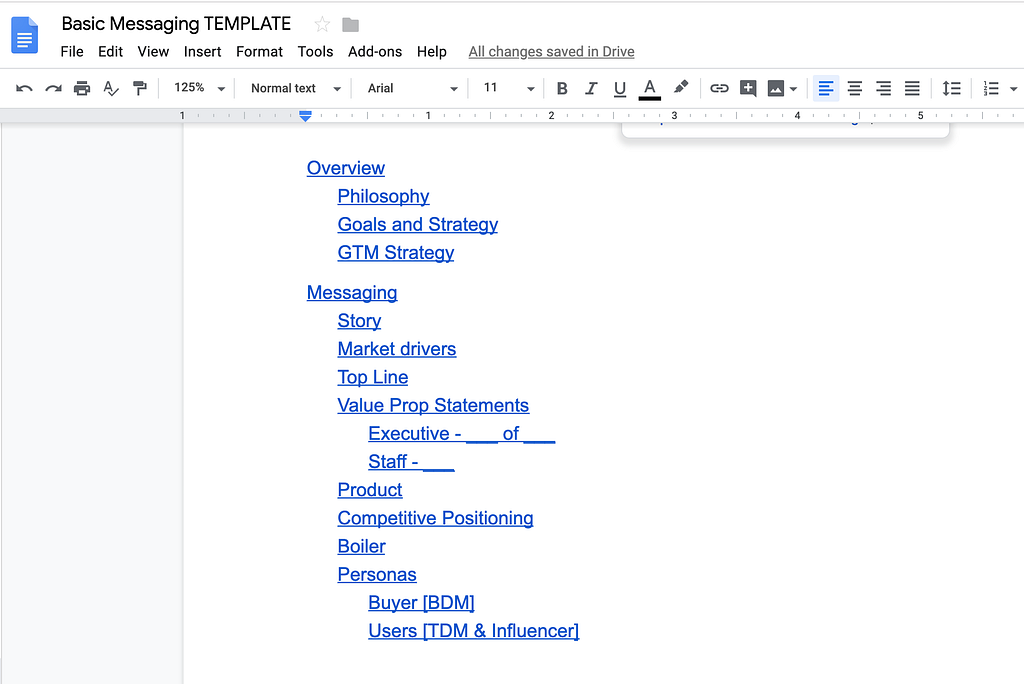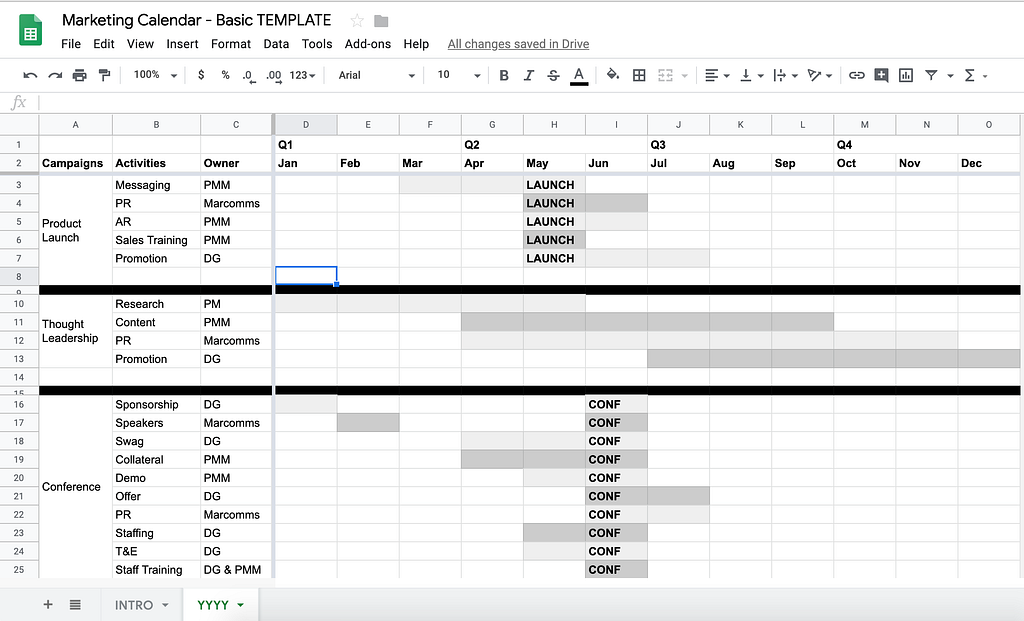Latest news about Bitcoin and all cryptocurrencies. Your daily crypto news habit.
Marketing 301 for Engineers: Strategy and Planning
Turning business goals into marketing reality Photo by Alexander Andrews on Unsplash
Photo by Alexander Andrews on Unsplash
From Marketing 204 for Engineers: Generating Demand..
In my brutally honest opinion, talking about demand gen strategy is usually a waste of time. Most discussions about DG amount to “how do we get more leads?”. The only differences between them are about budget, ranging from “at the lowest cost possible” to “at any cost.”
Most discussions of “marketing strategy” you have with CEOs and founders will not be about marketing and will not be about strategy. They will instead be about demand gen and tactics.
If you’re running marketing, you will still need some strategy. Without making that strategy explicit, you’ll find it incredibly hard to understand or explain how marketing actually delivers any outcomes.
Programming notes: this post is n in a series of indeterminate length on GTM topics mainly for startup people, mainly leadership, mainly coming from non-GTM backgrounds. There’s a list at the end.
Marketing Exists in a Go To Market and Product Context
All marketing exists within some go to market [GTM] and Product context. What are you selling? Who is going to use it? How will it make their lives better? Who are you selling to? What industry are you selling in to? How much do you need them to spend on you? How many deals do you need to close in a month, a quarter, a year? What is your (real and desired) sales motion? Who are your competitors? How does the market talk about what you do? What are you users and buyers expectations with regards to how products in your category are packaged and priced and delivered and consumed?
Example!
If you’re selling enterprise software into hospital groups that costs $250k a year at its cheapest and takes three months to pilot and get through HIPAA reviews with an additional three months to integrate and successfully onboard a customer with the help of sales engineering or professional services once they’ve signed a contract — you will have a very different marketing strategy (and tactics) compared to a freemium product for ISRs selling into unregulated industries with initial buy-in for a paid tier of $100 a year with a 14-day free trial and self-onboarding guided by docs and in-app tutorials that takes on average less than 30 days.
Marketing Goals Derive From Business Goals
Marketing, like every other functional area of a business, should have its own goals which clearly derive from and can be seen to contribute to business goals.
For each of the major areas of marketing — corporate/brand/comms, product, demand gen/lead gen/performance/growth — there should be an overarching goal.
Example!
Business Goals might look something like this:
- Be the most used and cited source of home value data in the United States
- Generate revenue through ad placements sold to real estate agents and property owners
For which Marketing Goals might derive like this:
- Brand: Develop the brand as empowering homeowners with information that previously was only available to real estate agents, putting them on equal footing
- Product: Position the product as the most accurate source of home value estimates
- Demand: Drive mass adoption and prioritize growth*
*Note: The purpose of “Demand” in this case is building up the supply, or inventory, of eyeballs that will be sold to advertisers.
Strategy Is How To Achieve Goals
For each of your goals, there will be some strategy that defines how you will achieve that goal.
Example!
Continuing from above..
A Marketing Strategy for the above goals might look like:
- Create brand perception through content
- Establish product positioning through product copy and user stories
- Generate user growth through being completely free and ungated, optimizing for search against home addresses, and prompting word-of-mouth via social mechanisms
Tactically, now, you have to figure out what your content strategy will be, what your editorial style will be, what keywords and kinds of searches you want to optimize for, what specific copy to put in the product, how to obtain and amplify user stories, what social mechanisms to test and use, etc.
Advice
Bundle Marketing Strategy with Messaging and Positioning into a single document of record, because these tend to serve as the source and guiding materials for everything else — from demand gen campaigns to product launches to funnel metrics. You can find a template to copy here.
 Basic Marketing Strategy & Messaging TemplateMore Advice
Basic Marketing Strategy & Messaging TemplateMore Advice
If the GTM or Product context changes, your Strategy will need to change. Proceeding with the same Marketing Strategy in a different business context, without revision, is a recipe for failure.
Even More Advice
If Tactics don’t work, change them. If all your Tactics aren’t working, your Strategy is probably the problem.
Tactics Are Strategy Implemented
For each of your strategies, aligned to each of your goals, there will be some array of tactics you deploy to actually execute that strategy.
Example!
Continuing from above..
The Marketing Tactics for the above strategies might be:
- Content: Produce original primary and secondary research based on house value data derived from real estate sources combined with proprietary data derived from search and usage trends of the product presented as branded content on monthly and quarterly cadences optimized for social distribution and search
- PR: Use content and in-house expertise (founders, economists) to pitch tech, economics, finance, and real estate oriented press on interesting/unique trends and make experts available to press for commentary on stories regarding the housing market
- PR: Build press relationships with outlets that have the widest reach with tech-savvy consumers and/or which are most picked up by other press outlets
- Messaging & Postioning: Develop product/feature naming and tag phrases emphasizing empowerment and accuracy and consistently apply throughout product experience, search optimization, social sharing copy and tags, and all content
- Customer Marketing: Invite users to tell their stories in the product itself while they’ve using the tool, via email after they’ve used the tool, etc., testing no incentives vs no-cost incentives (access to comparative data or early reports) vs paid incentives (gift cards)
- SEO: Ensure being in the top 5 results for every address typed into a search bar and for any housing value or price or market research
- WOM: Prompt for social sharing with pre-populated content as well as private sharing via emailed link with an in-product form
Advice
Every tactic has a half-life.
Many have long tails.
Always be looking for signals that you’ve hit the point of diminishing returns for a particular tactic and have in mind how that specific tactic needs to evolve or how it will be replaced.
Next level tactitioning would be to think about why a tactic is losing efficacy.
A tactic that has leveled off is not the same as one that’s on a downslope.
A flatlined tactic may represent something that generates run-rate [but not growing] business.
A tactic that’s on the downslope is not a tactic that’s useless. It may still generate incremental lead volume for a long time to come.
Think about your tactics as a portfolio of investments. Rebalance your portfolio in proportion to results.
Marketing Plans Put Strategy and Tactics To Work
Actual marketing work is generally organized around specific events or cadences.
In tech, especially at startups, the events that usually matter are: product launches, conferences (own or sponsored), and business announcements (funding rounds, acquisitions, partnerships, executive changes).
Typically the cadences that matter are are driven by sales: monthly, quarterly, and yearly.
Overlayed on events and cadences, marketing work historically has been organized into “campaigns”. Campaigns are a coordinated set of marketing activities designed to achieve a specific time bound goal. You can get down to the specifics of every week of a particular campaign — who’s responsible for producing what output or executing what specifics.
Campaigns can last weeks, months, and quarters. Never more than a year.
Example!
Continuing from above..
- Product Launch — 3 months: Starting 2 months before launch and ending 1 month after launch, coordinate messaging, positioning, comms, PR
- Thought Leadership Campaign — 6 months: Starting at Product Launch, execute brand strategy with content and PR tactics in a coordinated effort starting Q2 to achieve a press-recognized position as leading source of information, analysis, and public commentary on the housing market
- Housing Market Analysts Conference — 2 months: Starting 1 month before conference target analyst news and press outlets with expert commentary and market analysis, place speaker at conference, create analyst facing data offer requiring citation on any use of data but otherwise unencumbered use, promote offering during conference, promote offer post-conference using acquired attendee list
Marketing Calendar Template [Fork at will!]
 Basic Marketing Calendar TemplateAdvice
Basic Marketing Calendar TemplateAdvice
Organizing marketing work into campaigns may be overkill for your team, if you’re an early stage startup. If you find yourself spending more time organizing and coordinating than delivering, then remove process.
More Advice
Whether you use spreadsheets, project management software, Google Calendar, wikis, or any particular tool to coordinate and communicate work does not matter. Whether everyone on your team uses the same tool and whether everyone on other teams can understand what you’re doing by looking at those tools does matter.
Posts in this series (and templates)
- Marketing 101 for Engineers: A Functional Introduction
- Marketing 102 for Engineers: Roughing Out a Funnel
- Marketing 201 for Engineers: Messaging & Positioning
- Marketing 202 for Engineers: Launching
- Marketing 203 for Engineers: Sales Enablement
- Marketing 204 for Engineers: Generating Demand
- Marketing 301 for Engineers: Strategy & Planning
- Sales 101 for Engineers: A Functional Introduction
- PR 101 for Engineers
- Analyst Relations 101 for Engineers
- Basic Messaging Template [Google Doc]
- Basic Funnel Metrics Template [Google Sheet]
- Basic Launch Timeline Template [Google Doc]
- Basic Battlecard Template [Google Doc]
- Detailed Battlecard Template [Google Doc]
- Basic Marketing Calendar Template [Google Sheet]
Reading List and Resources
- Bob Tinker’s GTM Fit Talk and Slides
- Startup Marketing Playbook
- Aha! Marketing Strategy Templates
- Shot the Curl Marketing Templates
- Ogilvy on Advertising
Marketing 301 for Engineers: Strategy & Planning was originally published in Hacker Noon on Medium, where people are continuing the conversation by highlighting and responding to this story.
Disclaimer
The views and opinions expressed in this article are solely those of the authors and do not reflect the views of Bitcoin Insider. Every investment and trading move involves risk - this is especially true for cryptocurrencies given their volatility. We strongly advise our readers to conduct their own research when making a decision.